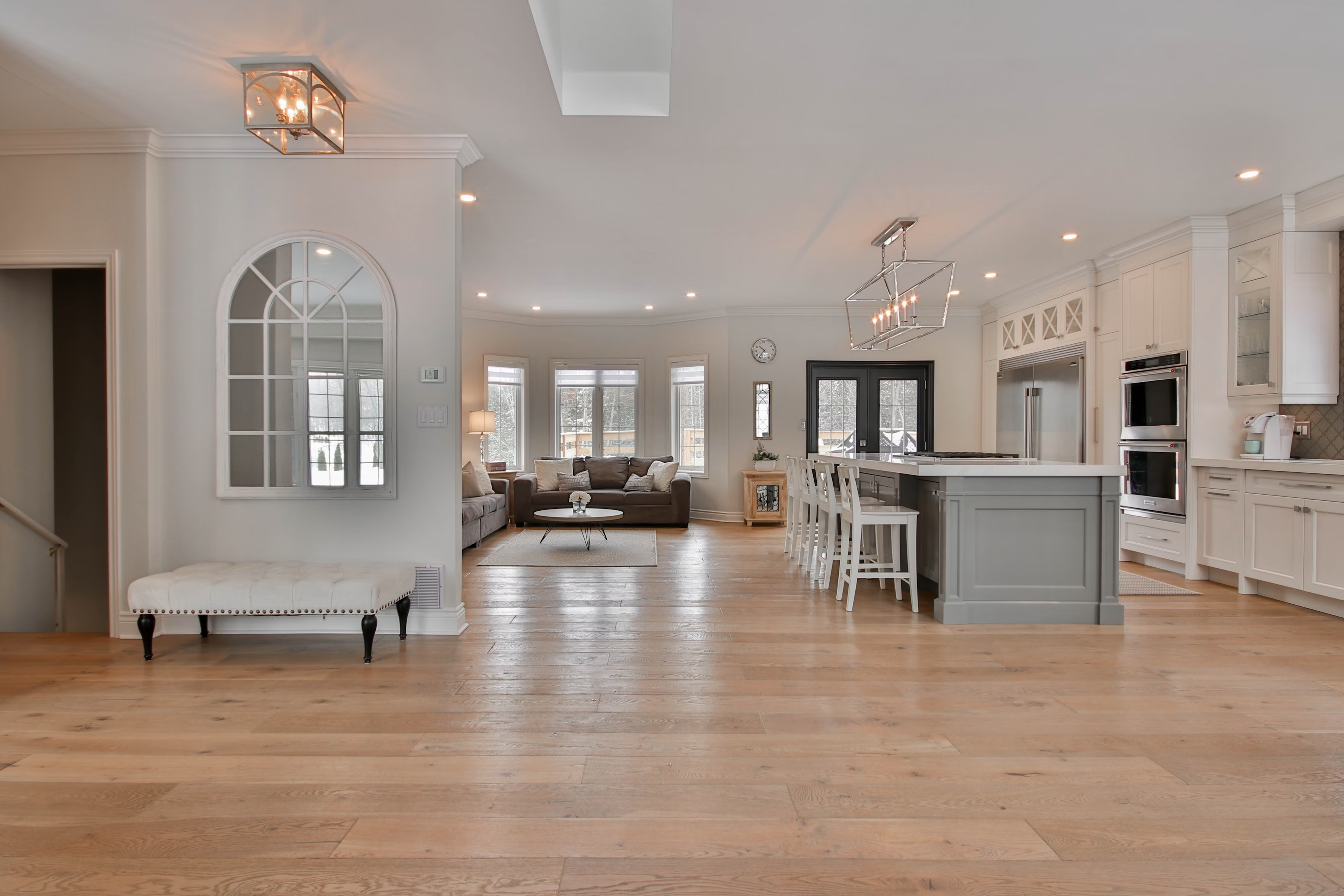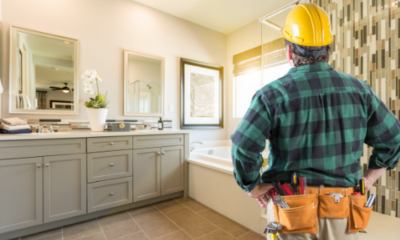Lifestyle
10 Things Homeowners Need to Know Before Installing Heated Floors

Heated floors are becoming an increasingly popular home improvement choice. They offer comfort, energy efficiency, and a touch of luxury that can enhance any home. However, before you dive into installing heated floors, there are several important things to consider. Here’s a comprehensive guide to help you understand what’s involved and ensure a successful installation.
1. Understand the Types of Heated Floors
There are two main types of heated floor systems: electric and hydronic. Electric systems use electrical cables or mats installed under the flooring. These are typically easier to install, making them a popular choice for smaller areas or specific rooms like bathrooms and kitchens. Electric systems are ideal for DIY projects due to their straightforward installation process. However, they can become quite expensive to operate over large areas due to higher electricity costs.
On the other hand, hydronic systems use hot water pumped through tubing installed beneath the floor. According to Brandon Shearin, Founder, Ready House Buyer, “This type of system is more complex and requires professional installation, but it is more energy-efficient and cost-effective in the long run, especially for heating large areas. Hydronic systems can be integrated with your existing home heating system, utilizing a boiler or water heater to warm the water circulated through the pipes. This type of system provides even, consistent heat across the floor surface and is particularly well-suited for whole-house heating.”
2. Evaluate Your Flooring Options
Not all flooring materials are suitable for heated floor systems. Tile, stone, and concrete are the best options because they conduct heat well and are durable enough to withstand the temperature changes without damage. These materials store and radiate heat efficiently, making them ideal for maximizing the benefits of your heated floor system.
Laminate, engineered wood, and some types of carpet can also work with heated floors but require careful selection and installation to ensure they don’t get damaged by the heat. For instance, laminate and engineered wood must be compatible with radiant heat systems, which means choosing products specifically designed for this purpose. Carpet should have a low R-value (thermal resistance) and be used with a compatible underlay to ensure heat transfer is not impeded. Jeremy Resmer, CEO, Value Land Buyers said: “Hardwood flooring is generally not recommended for use with heated floors due to its potential to expand and contract with temperature changes, which can lead to warping or cracking over time.”
3. Consider the Installation Cost
The cost of installing heated floors can vary widely depending on the type of system, the size of the area, and the complexity of the installation. Electric systems are usually less expensive to install initially, with costs ranging from $10 to $20 per square foot, including materials and professional installation. However, their operating costs can be higher due to the electricity required to run the system.
Lance Doty, Owner, Home Buying Guys, said: “Hydronic systems, while more costly to install (typically between $20 and $35 per square foot), are more efficient and have lower long-term operating expenses. These systems require a boiler or water heater, pumps, and a network of pipes, making the installation process more involved and labor-intensive.”
It’s important to get detailed quotes from multiple installers to understand the total cost of your project, including any additional expenses for upgrading your electrical or plumbing systems to accommodate the new heated floor system.
4. Plan for Electrical and Plumbing Work
Installing heated floors often requires electrical work for electric systems and both electrical and plumbing work for hydronic systems. “Before you start, make sure your electrical system can handle the additional load,” advises John Jones, owner of Sell My House Fast Now. You may need to upgrade your electrical panel or add new circuits to support the heated floor system, which can add to the overall cost and complexity of the project.
For hydronic systems, a connection to your home’s boiler or water heater is necessary, which might require professional plumbing services. This involves running pipes from the boiler to the area where the heated floors will be installed, as well as setting up pumps and controls to manage the system. Ensuring that your plumbing system can handle the additional load is crucial for the efficient operation of a hydronic heated floor system.
5. Insulation is Key
Proper insulation is crucial to ensure that the heat generated by your system goes up into the room rather than down into the subfloor. Insulating under the heating elements can significantly improve the efficiency of your heated floors. There are various insulation materials available, including foam boards and reflective barriers, which can be chosen based on your specific needs and flooring type.
Without proper insulation, a significant amount of the generated heat can be lost to the subfloor, reducing the efficiency and effectiveness of your system. Insulation helps to direct the heat upwards into the room, ensuring even heat distribution and reducing energy consumption. This is particularly important in homes with concrete subfloors, which can absorb a lot of heat if not properly insulated. Installing a layer of insulation before laying the heating elements ensures that your system operates at its highest efficiency.
6. Understand the Operating Costs
While heated floors provide comfortable, even heating, it’s important to understand the operating costs. “Hydronic systems are generally more economical to run in larger areas, especially if you have an efficient boiler,” says Shannon Beatty from House Buying Girls. Hydronic systems use hot water heated by a boiler, which can be more cost-effective than electric systems, particularly if you already have a high-efficiency boiler.
Electric systems, while easier to install and ideal for small spaces, can lead to higher electricity bills if used extensively. The cost of electricity can vary depending on your location and the size of the area being heated. It’s crucial to consider your long-term budget for running the system. To keep operating costs manageable, you might want to use programmable thermostats to control the heating system more efficiently, ensuring that the floors are heated only when necessary.
7. Think About Room Use
Consider which rooms will benefit most from heated floors. Bathrooms and kitchens are popular choices because they tend to have cold surfaces and are used frequently. In these spaces, heated floors can provide additional comfort and reduce the need for supplementary heating sources like space heaters.
Garrett Lamb, Owner, We Buy Houses Fast said: “Heated floors can also be a great addition to basements, bedrooms, and living areas. In basements, heated floors can help address the naturally cooler temperatures and create a more comfortable living environment. For bedrooms and living areas, the even heat distribution of heated floors can eliminate cold spots and create a cozy atmosphere. Planning your installation based on the specific needs and usage patterns of different rooms will help maximize comfort and efficiency.”
8. Check for Compatibility with Your Heating System
If you have an existing central heating system, particularly a hydronic one, integrating a heated floor system can be more straightforward and cost-effective. “It’s important to check if your current system can support the additional load of a hydronic heated floor,” advises Lance Doty, owner of Home Buying Guys. If your boiler or water heater is not sufficient to handle the additional demand, you might need to upgrade, which can add to the overall cost.
Adam Seguin, CEO, Myrtle Beach Home Buyers said “For homes with electric heating systems, you’ll need to ensure that your electrical panel has enough capacity to support the new heated floor system. This might involve upgrading your electrical service or adding new circuits. Consulting with a heating professional can help you determine the best approach for integrating heated floors with your existing heating system and ensure that everything is compatible and efficient.”
9. Consider the Installation Time
Installing heated floors is not a quick project. Depending on the system and the size of the area, it can take several days to weeks. Electric systems typically take less time to install than hydronic systems, which involve more complex plumbing work. For a successful installation, proper planning and scheduling are essential. Make sure to plan accordingly and factor in any additional time needed for other related projects, such as replacing flooring or upgrading electrical systems.
For larger areas or whole-house installations, the process can be more time-consuming. Coordinating with professionals and ensuring that all materials and equipment are ready can help streamline the installation process. Additionally, if you’re installing heated floors as part of a larger renovation project, coordinating the timing of different tasks can help avoid delays and ensure a smooth workflow.
10. Maintenance and Longevity
Heated floor systems are generally low maintenance, but they do require some attention to ensure they operate efficiently and last a long time. Regular checks and occasional servicing, especially for hydronic systems, can help prevent problems. It’s also important to follow the manufacturer’s guidelines for use and maintenance. Proper installation and regular maintenance can ensure that your heated floors provide comfort and efficiency for many years.
For electric systems, this might include checking the electrical connections and ensuring that the thermostat is functioning correctly. Hydronic systems may require periodic checks of the boiler, pumps, and pipes to ensure there are no leaks and that everything is working efficiently. Additionally, keeping the flooring clean and free of debris can help maintain the efficiency of your heated floors. Following a regular maintenance schedule can help you catch potential issues early and address them before they become major problems.
Conclusion
Installing heated floors can transform your home into a more comfortable and inviting space. By understanding the different types of systems, evaluating your flooring options, and considering the installation and operating costs, you can make an informed decision. With proper planning and professional help, heated floors can be a worthwhile investment that adds both luxury and functionality to your home. Whether you choose electric or hydronic systems, ensuring proper installation and maintenance will allow you to enjoy the benefits of heated floors for many years to come.






